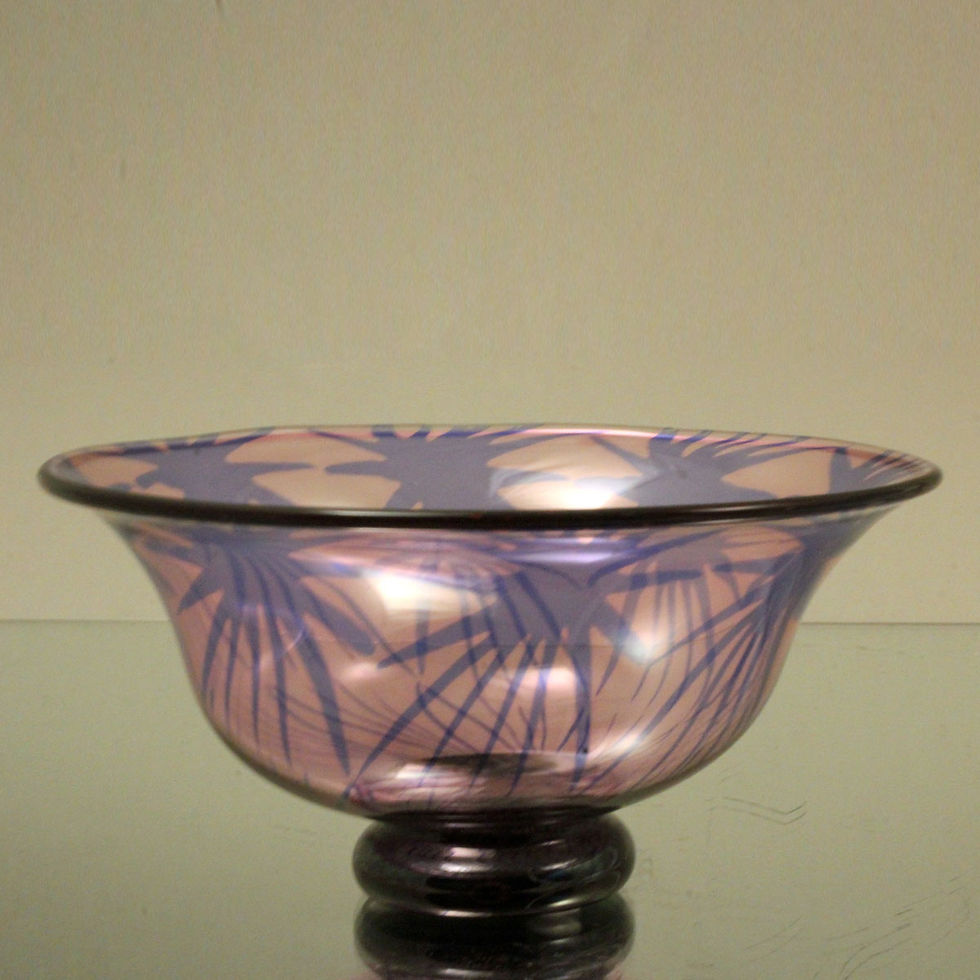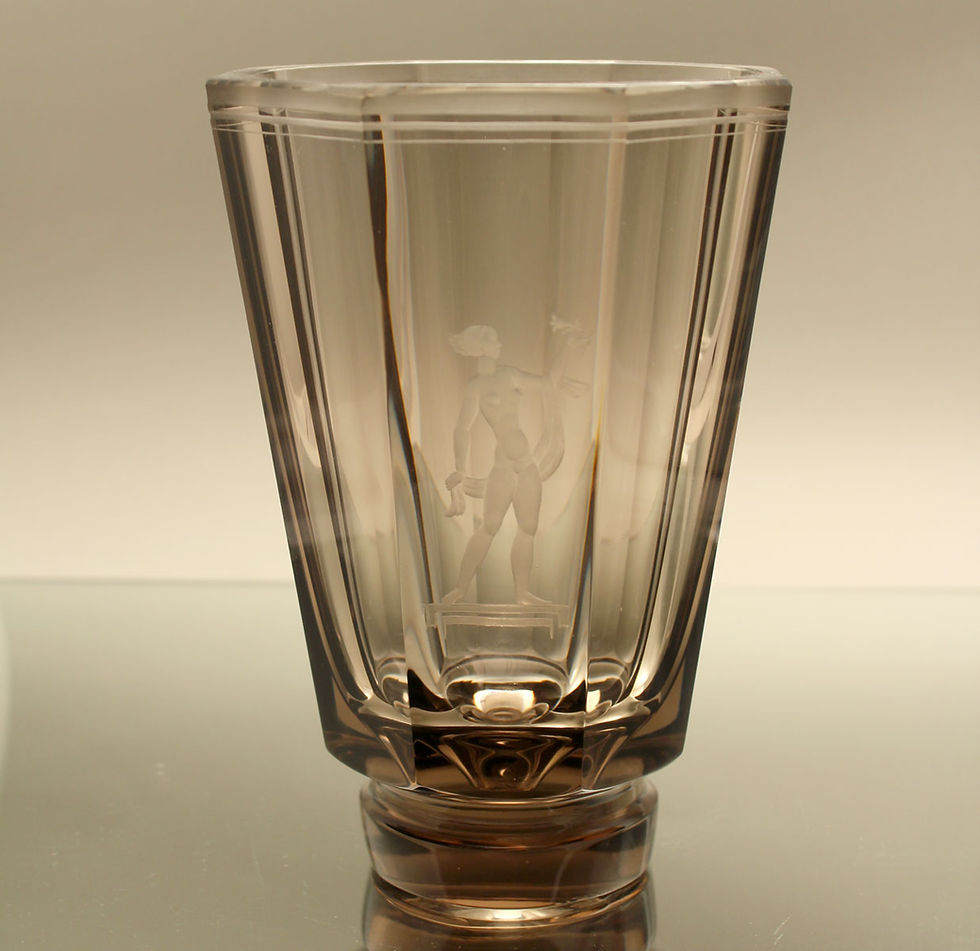Orrefors Glassworks - the holy Graal
The Orrefors glassworks was founded in 1889 and from 1913 a genuine production of art glass was started. At first it was crystal glass and cased glass as from instance Daum and Gallé. In 1916, the artist Simon Gate was employed, and a little later Edward Hald. The two worked together with glass blowing master Knut Bergquist to develop cased glass. It became the so-called "Graal glass”. Graal means in Latin Cup , and the name was inspired by the myth of the holy Graal, which would contain the blood of Christ The company had been aiming for a strong brand, and Graal was the one. Graal has now become a synonym for Orrefors. The Graal technique consists of a cold glass article, which is coated with one or more layers of colored glass. After a cooling of the glass, a sand-blasted or engraved decoration is added, and the item is warmed up again, and finally a clear sheet of glass is added.
Alongside making Graal glass, Orrefors also produced finely engraved glass items. One of the best known is the "Paris Cup" from 1922 by Simon Gate, it was given as a gift from the Swedish capital Stockholm to the city of Paris. The performance of the engraving took 600 hours. Orrefors art glass had an international breakthrough at the World Exhibition in Paris in 1925
Throughout the 20th century, numerous artists worked with art glass at Orrefors - among other: Niels Landsberg, Vicke Lindstrand, Sven Palmquist, Edvin Öhrström, Carl Fagerlund, Ingeborg Lundin, Gunnar Cyrén, Jan Johansson, Olle Alberius, Lars Hellesten, and Eva Englund .
























